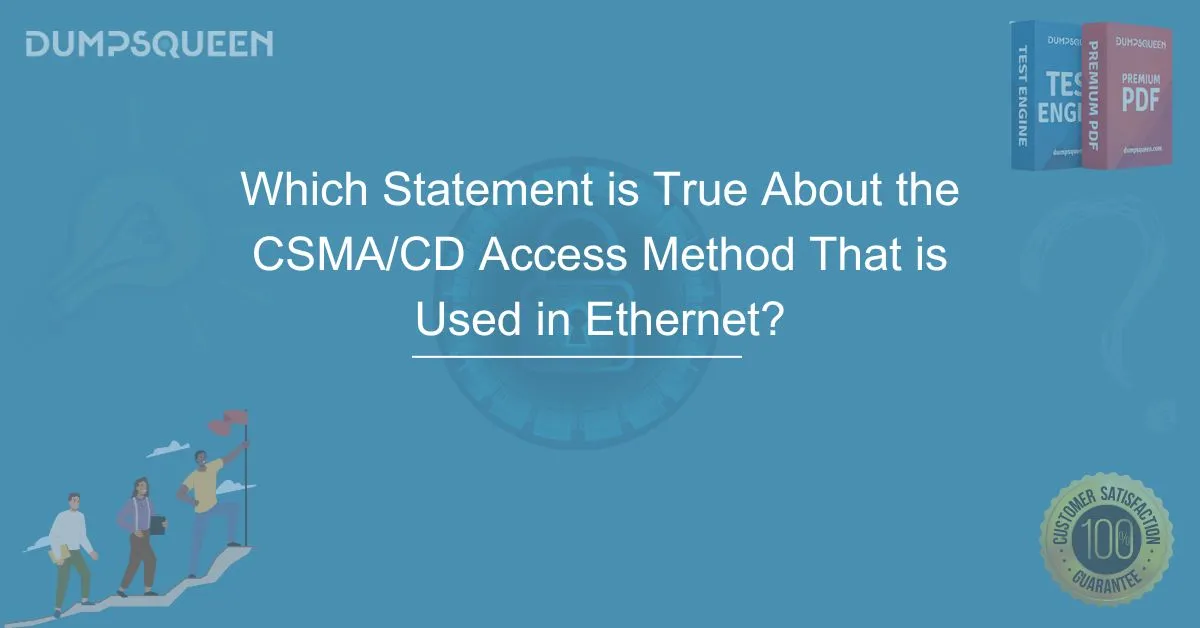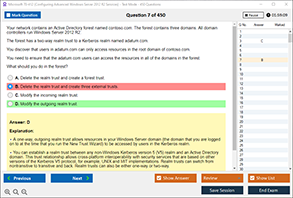Introduction
In the world of networking, Ethernet remains one of the most widely used technologies, forming the backbone of both local and wide-area networks. One of the critical components of Ethernet is Carrier Sense Multiple Access with Collision Detection (CSMA/CD), a protocol that governs how data is transmitted across a shared medium. This method ensures that data is sent efficiently while minimizing the chances of collisions that can occur when multiple devices attempt to communicate simultaneously.
For professionals working in IT and networking, understanding the CSMA/CD protocol is essential. In this article, DumpsQueen Official will explain the principles of CSMA/CD, how it functions in Ethernet networks, and its relevance in modern networking environments.
Understanding the CSMA/CD Access Method
CSMA/CD is an essential mechanism used in Ethernet networks to regulate data transmission and prevent collisions. It operates by allowing devices to sense the network before attempting to transmit data. If a device detects that another transmission is already in progress, it waits before sending its data. However, if two devices attempt to transmit at the same time, a collision occurs. In such cases, the CSMA/CD protocol ensures that both devices halt transmission, wait for a random period, and then attempt to retransmit. This process helps maintain network stability and efficiency.
How CSMA/CD Works in Ethernet Networks
The CSMA/CD process consists of several steps that ensure smooth communication among devices on an Ethernet network. Here’s a breakdown of how it operates:
Carrier Sensing Before Transmission
Before sending any data, a device checks whether the transmission medium is already in use. If it detects another transmission, it waits before sending its own data. This carrier sensing mechanism helps minimize the likelihood of collisions occurring on the network.
Handling Data Collisions
If two devices transmit data at the same time, their signals will collide, leading to a disruption in communication. When a collision is detected, the affected devices immediately stop sending data and initiate a collision resolution process.
Backoff and Retransmission
After a collision, both devices must wait before attempting to retransmit their data. The waiting period is determined using a random backoff algorithm, which ensures that the devices do not try to resend data at the exact same time. This process significantly reduces the chances of repeated collisions and allows the network to recover efficiently.
The Role of CSMA/CD in Half-Duplex and Full-Duplex Ethernet
Ethernet networks operate in two different transmission modes: half-duplex and full-duplex. The role of CSMA/CD varies depending on the mode being used.
Half-Duplex Ethernet
In half-duplex mode, devices can either send or receive data at any given time, but not both simultaneously. Since multiple devices share the same communication channel, the chances of collisions are high. CSMA/CD plays a crucial role in this mode by ensuring that only one device transmits at a time and by managing collision recovery when necessary.
Full-Duplex Ethernet
In modern full-duplex Ethernet networks, devices can send and receive data simultaneously using separate transmission channels. Since there are dedicated channels for each direction of communication, collisions do not occur. As a result, CSMA/CD is no longer required in full-duplex networks, and its use has largely been phased out in favor of more efficient switching technologies.
Importance of CSMA/CD in Ethernet Communication
CSMA/CD has played a crucial role in Ethernet networking by regulating data transmission and preventing network congestion. Its importance can be understood through the following key benefits:
-
Efficient Network Utilization: By ensuring that devices only transmit when the network is free, CSMA/CD helps optimize the use of network resources.
-
Minimization of Data Collisions: The protocol detects and handles collisions effectively, ensuring that communication remains smooth and uninterrupted.
-
Enhanced Network Performance: By preventing excessive retransmissions and reducing network congestion, CSMA/CD improves the overall performance and reliability of Ethernet networks.
Evolution of Ethernet and the Decline of CSMA/CD
With advancements in Ethernet technology, the relevance of CSMA/CD has diminished over time. Today, most modern networks use switched Ethernet, where dedicated pathways exist for each device’s communication. These advancements have significantly reduced the occurrence of collisions, making CSMA/CD obsolete in many high-speed networks.
Despite this, understanding CSMA/CD remains essential for IT professionals, particularly those working with legacy systems and traditional Ethernet configurations.
Conclusion
CSMA/CD has been a fundamental part of Ethernet networking, ensuring efficient data transmission and collision management in half-duplex environments. While its importance has declined with the rise of full-duplex switched networks, it remains a valuable concept in networking education and legacy system maintenance. As networking continues to evolve, professionals must understand both historical and modern Ethernet technologies to effectively manage and optimize network infrastructure.
Free Sample Questions
1. What is the primary purpose of CSMA/CD in Ethernet networks?
A) To increase network speed
B) To manage and prevent data collisions
C) To improve wireless communication
D) To replace the need for network switches
Answer: B) To manage and prevent data collisions
2. When does a collision occur in a CSMA/CD network?
A) When a device sends data without checking the network
B) When two devices transmit data simultaneously
C) When a switch is used to manage traffic
D) When the network administrator blocks a connection
Answer: B) When two devices transmit data simultaneously
3. Why is CSMA/CD not used in full-duplex Ethernet networks?
A) Because full-duplex Ethernet does not experience collisions
B) Because CSMA/CD is an outdated technology
C) Because full-duplex Ethernet is wireless
D) Because CSMA/CD only works in fiber-optic networks
Answer: A) Because full-duplex Ethernet does not experience collisions



